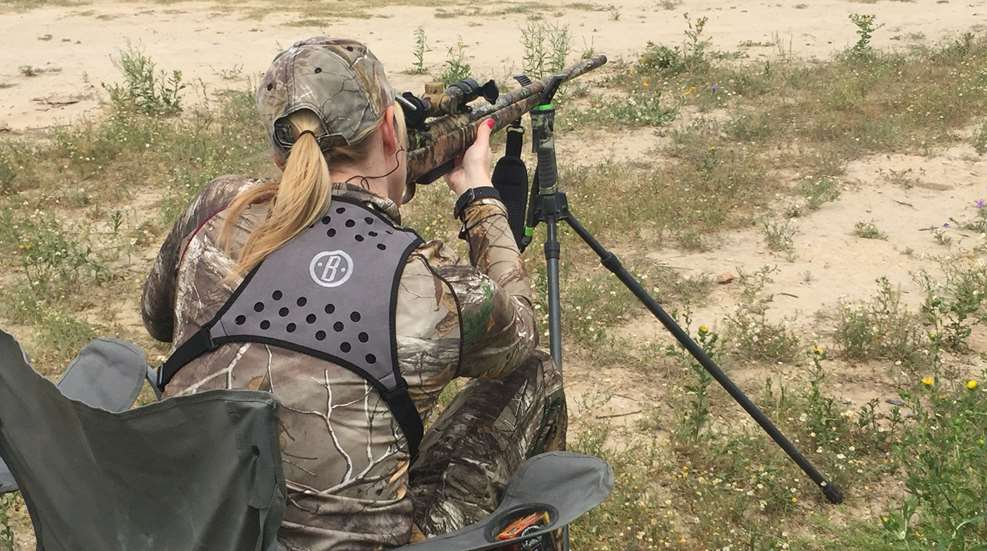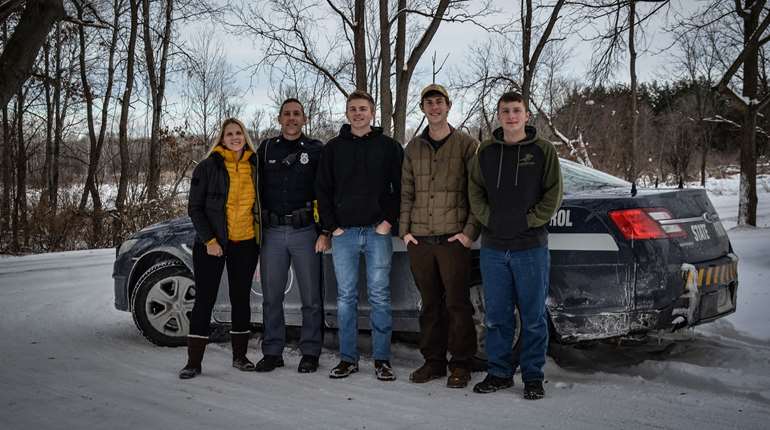
A first hunt is a big deal. You’ll remember it forever, no matter how it unfolds. If you’re able to harvest an animal on your first hunt, it’ll be all the more memorable and increase the odds that you’ll come back for more, or even branch out into other types of hunting.
If you’ve never hunted before, or you’re taking a child or a new adult hunter on his or her first hunt, there are a few key ingredients that will make the day successful.
- It should be fun.
- It should be relatively easy and accessible.
- It should ideally have a high success rate.
With those three criteria in mind, here are a few different types of hunting that make for a great first experience.
1. Squirrel Hunting
Squirrel hunting hits all three keys to success. It’s a little more interactive than, say, deer hunting. You can hunt squirrels with the help of a squirrel dog if you know someone who has one, and this is a very active method of pursuit. More commonly, squirrels are hunted by plunking down at the base of a tree and waiting. When you spot a squirrel, there’s sometimes a little peek-a-boo game involved where a squirrel will move to the back of a tree and you’ll try to ever-so-subtley sneak around or convince him to scoot back to your side. Either way, it’s fun.

It’s also the very definition of accessible—squirrels are everywhere, and landowners are much more likely to let you hunt squirrels than they are deer or other more high-profile game.
Squirrel hunting is usually done with a small-bore shotgun or a .22LR rifle, both of which are easily handled by new hunters. The chances for success are pretty high, and this is a perfect spur-of-the-moment hunt. You can often decide it feels like a good day for squirrel hunting and be in the field with little notice, because you’re probably not traveling very far to find a place to hunt.
Squirrel hunting tip: Squirrels like to hole up in their nests on windy days and they’ll be more difficult to find. You’ll have more success on a calmer day. They’re also easier to spot later in the season when the leaves have fallen from the trees.
2. Turkey Hunting
Turkey hunting might be the most fun a new hunter (or any hunter) can have. Depending on your state, it’s typically not difficult to obtain a turkey tag, and if a new hunter can handle a shotgun safely, they can kill a turkey. The fun of turkey hunting is in the cat-and-mouse game between the hunter/caller and the turkey, getting a conversation going with a bird, and then sitting frozen with your heart pounding when you realize the gobbler is coming your way and you’re just desperately waiting for him to make his appearance. Adrenaline overload!

Different states and different species of turkeys offer different success rates. Beginners will have more success and likely more fun if they go with an experienced turkey hunter who knows how to call. Otherwise, start with a push-button call or a box call and start practicing how to sound like a real turkey. This is a huge part of the fun of turkey hunting, and you can do it all year long.
Turkey hunting tip: Sit still. Turkeys have great eyesight and a 270-degree field of view, and Eastern turkeys especially are known to bolt at the slightest sign that something is amiss. Get your gun in position and be ready to shoot before the bird appears.
3. Dove Hunting
Opening day of dove season is a time-honored tradition in many states. It’s a social event, often with lots of talking between flights, which makes the dove field a great place for kids and adults alike to get their feet wet in the hunting world. If you’re lucky enough to live somewhere with this great tradition, ask around about who’s got a dove field and might let you tag along.

Dove hunters miss a lot, because doves are acrobatic little flyers with deceptive speed. Everyone will be missing, so you won’t feel bad if you’ve already fired half a box of shells and haven’t dropped anything. This means the success rate isn’t super high, but a good field is sure to have some action, and I guarantee you’ll have a blast no matter how many birds you add to your game bag. Sub-gauge shotguns are more than appropriate for doves, making this hunt particularly newbie-friendly.
Dove hunting tip: Because doves are migratory birds, you need a HIP (Harvest Information Program) permit in order to hunt them. This is free when you buy your hunting license, but be sure to check the box and answer the questions to obtain your HIP.
4. Pronghorn Hunting
Specifically, waterhole hunts for pronghorn have a high success rate in the early season when it’s dry and hot and animals are searching for water. This is archery season, but crossbows are legal in many states where pronghorn are found, and a new hunter can become proficient with a crossbow in just a few range sessions. In Wyoming, where there are more pronghorns than there are people, obtaining a tag isn’t too difficult, especially if you’re happy with shooting a doe. And pronghorn, when properly cared for, is some of the best-tasting wild game meat available.
Pronghorn hunting tip: On a waterhole hunt, you’ll be sitting in a dark blind baking in the sun, maybe all day. Pack snacks and lots of water.

5. Prairie Dogs
If you live in a state that has prairie dogs, they’ll make for a great first hunt. Most ranchers are more than happy to let you shoot them to your heart’s content, and setting up over a prairie dog town gives you the ultimate target-rich environment. The success rate is high, and this is another more social type of hunt, where you can interact with friends while you shoot prairie dogs that pop up out of their holes. You can also stalk through a known prairie dog area and hunt the dogs spot-and-stalk style.

You don’t need much knockdown power for prairie dogs, so smaller-caliber rifles are more than appropriate, making this hunt accessible to shooters of all skill levels.
Prairie dog hunting tip: This could be a low-risk chance to stretch your shots out a few hundred yards, so practice your long-distance shooting at the range before you go.
6. White-Tailed Deer
It’s America’s most popular big-game animal for a reason—whitetails can be hunted in most states, although the method of hunting varies widely based on geography. With a few exceptions (mostly out West), whitetail tags are sold over-the-counter or are included with your hunting license purchase, so you’ll likely not have any trouble obtaining one.
Forget all the hype you’ve seen on the hunting television shows and set your sights on a doe for a lower-pressure, higher-success-rate first hunt. You’re more likely to get permission to hunt private land if you’re specifically targeting does, too. Box blinds and ground blinds are particularly forgiving of anyone (ahem, kids) who gets fidgety.

If you’re taking a young person on their first deer hunt, take advantage of a special youth season if your state offers one. These are usually held prior to opening day of firearms season for the general population, so the deer are less skittish, and there will be fewer hunters competing for spots on public land. Rifles in .223 and up are appropriate for deer with the right load (be sure to check your state regs about minimum caliber), so make sure you or the hunter you’re taking have practiced at the range before you hit the field.
Deer hunting tip: Be sure you have a plan for what happens after the shot. Read up on how to field-dress a deer, especially if you’ll be doing it by yourself, and know where the local processors are or how and where you plan to hang, skin and butcher the deer yourself. Line up help ahead of time if you think you’ll need it.















































